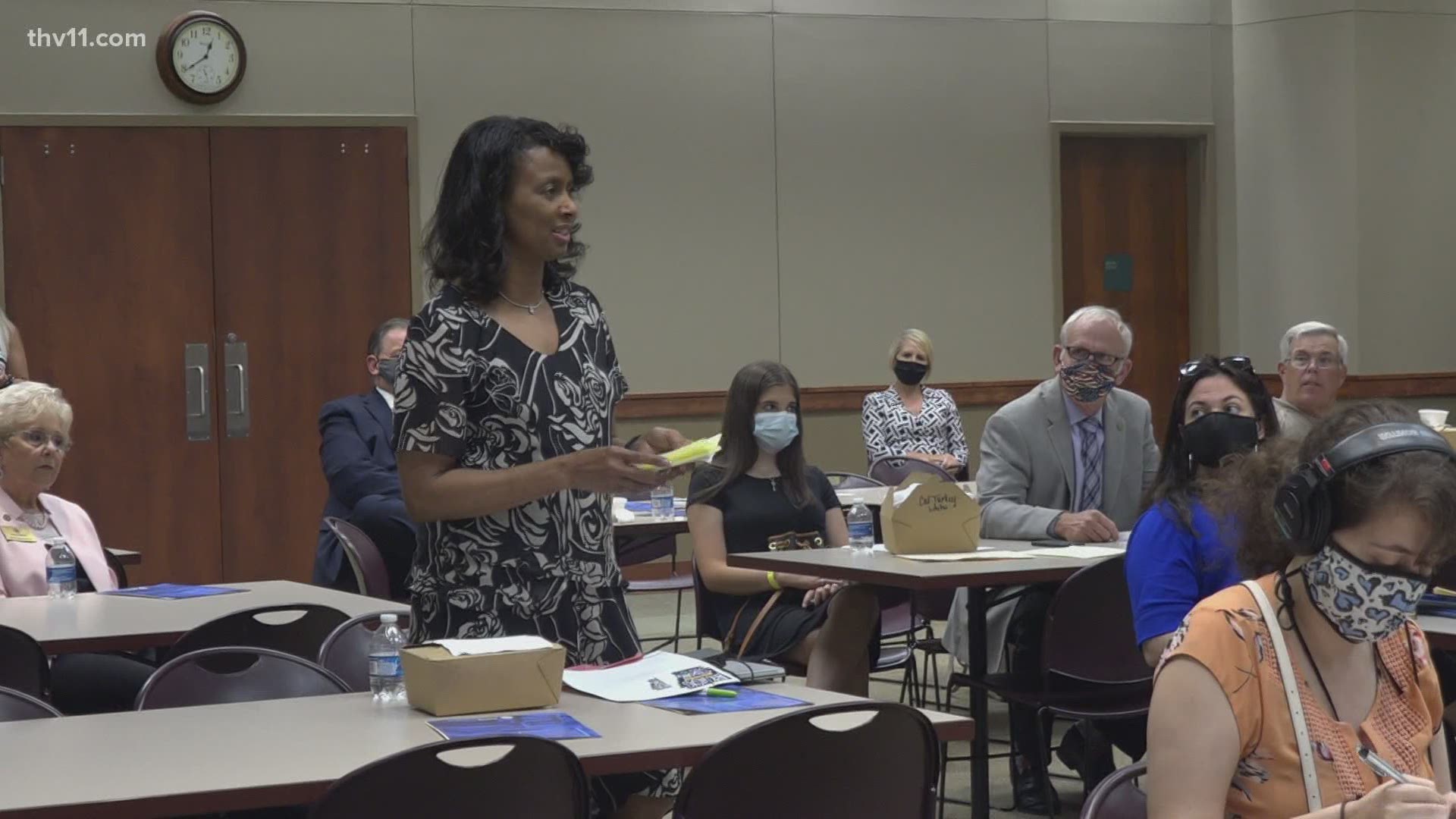LITTLE ROCK, Ark. — Calls by the largest teachers' union in Arkansas to delay on-site instruction scheduled to begin Aug. 24 highlighted a Monday gathering of the legislative education caucus.
The regular meeting is normally an informal lunch where lawmakers get deep in the weeds on education policy, but State Senator Alan Clark (R - Lonsdale) turned Monday's into a media event by inviting several stakeholders to answer questions.
No consensus emerged other than an acknowledgment that the coronavirus is making planning difficult.
"It's tough," said Dr. Richard Abernathy, the executive director of the Arkansas Association of Education Administrators. "It's a tough time to be in education right now."
The Arkansas Education Association used the invitation to present the results of a working-group plan they called the School Reopening Matrix.
It outlined four core principals that the union said needed to be in place for a safe reopening.
"We are simply not ready to reopen public schools to onsite, in-person instruction statewide," said Carol Fleming, the president of the union, drawing a clear line in the sand.
The AEA said reopening is too risky based on how many positive tests are coming back each day.
Members of the Arkansas Chapter of the American Academy of Pediatrics backed Fleming up, pointing to a conclusion reached in July that the virus was too prevalent in the state and its effects on children were not fully understood yet.
But a different non-union professional association, the Arkansas State Teachers Association, looked at the same data and earlier conclusions by the national AAP to say many members do want to get back in the classroom.
"It's very difficult to say 'do not go back to school' and it's very difficult to say 'Yes, absolutely go back to school,'" said Dr. Michelle Linch, the executive director of ASTA.
"I'm telling you when our members speak to us, there are passions on both sides."
State Education Secretary Johnny Key spoke for Hutchinson on the commitment the administration has to have students back in class while following safety guidelines.
"If we do as some have advocated, and we don't start on-site for the first nine weeks, some say until December, my question is: will we ever start?" he said, answering questions from Clark and other legislators.
Republican lawmakers questioned whether administrators and local school board members had the information they needed to make tough calls.
Democrats pressed Key for details on how much the state could support local districts when it came to providing personal protection equipment.
Leaders of the two teaching groups pointed to surveys to make their points.
The AEA's indicated 90 percent of the more than 6,000 respondents did not favor in-school teaching. Dr. Linch contended that the ASTA survey was open only to its members, making it more scientific with a smaller margin of error. It pointed to a majority who wanted to resume on-site instruction.
Neither woman would reveal the size of their organizations when asked.
By the end of the nearly two hours, most seemed inclined to send educators back into the building, albeit very cautiously.
"Kids need to be back in school," said Dr. Abernathy, the head of the principals and superintendents organization.
"Folks, we have kids that have not had any instruction since March. When they left school in March, they've basically gotten zero. There's just no guarantees in this, but we are going to do the best we can."

